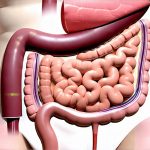Our digestive system is an incredibly complex machine, constantly working to break down food and extract nutrients. Often, we only pay attention when something feels off – perhaps bloating, discomfort, or changes in bowel movements. But subtle shifts in our eating habits, specifically how much we perceive we’re consuming versus actual portion sizes, can create a cascade of effects that manifest as alterations in stool quality. These aren’t necessarily signs of illness, but rather signals from the body responding to inconsistent input and potentially imbalanced digestive processes. Understanding this connection is crucial for proactive gut health management and recognizing when further investigation might be necessary. If you notice concerning changes, checking top early signs from stool tests could provide additional insight.
The link between portion awareness and stool changes often goes unnoticed because our brains are surprisingly bad at estimating food volume. We rely on visual cues, past experiences, and even the shape of plates to determine how much we’re eating. This leads to frequent underestimation – a phenomenon exacerbated by larger plate sizes and readily available, highly palatable foods. When this disconnect occurs consistently, it can disrupt the delicate balance within our digestive system, influencing everything from hydration levels to gut motility, ultimately impacting stool formation and consistency. It’s not always about what we eat, but how much we think we’re eating versus what we actually are. Learning insights you can get from a basic stool analysis can help understand these imbalances.
The Role of Fiber & Hydration
Fiber plays a central role in stool quality, acting as the structural component that gives bulk and form to our waste. When portion awareness is poor, we might unintentionally reduce fiber intake, or conversely, overestimate and consume excessive amounts without adequate hydration. This imbalance throws off the entire process. Insufficient fiber leads to smaller, harder stools that can be difficult to pass – often described as pebbles or requiring significant straining. Conversely, a sudden increase in fiber without sufficient water intake can result in bloating, gas, and even constipation, because the fiber absorbs water from the colon, making stool more difficult to move through the digestive tract.
Hydration is inextricably linked to fiber’s function. Water softens stools, allowing for easier passage and preventing constipation. Poor portion awareness often means we underestimate our fluid needs, particularly when consuming higher volumes of food (even if perceived inaccurately). Dehydration exacerbates the effects of low fiber intake, creating a vicious cycle of hard stools and discomfort. Maintaining adequate hydration is paramount, not just for stool quality but for overall health. It’s essential to remember that individual hydration needs vary based on activity level, climate, and other factors, making it challenging to provide one-size-fits-all recommendations. Understanding stool color and texture changes can help you determine when hydration is a key factor.
The relationship between fiber, hydration, and portion awareness creates a delicate equilibrium. Consistently misjudging portion sizes can disrupt this balance, leading to fluctuations in stool consistency – ranging from hard and infrequent to loose and frequent – or even alternating between the two. Recognizing these patterns is the first step towards addressing the underlying issue of inaccurate portion control. Key takeaways from tracking your digestive data can help identify these trends.
Identifying Portion Distortion & Its Impact
Portion distortion refers to the phenomenon where our perception of a “normal” serving size becomes skewed over time, often due to exposure to oversized portions in restaurants and packaged foods. This can lead us to consistently underestimate how much we’re actually eating, contributing to imbalances in our diet and digestive system. It’s important to understand that this isn’t necessarily about intentional overeating; it’s about a miscalibration of our internal “portion gauge”.
- Look for visual cues: Compare your serving sizes to recommended portion guidelines (available from reliable sources).
- Pay attention to packaging: Often, packaged foods will list serving sizes, but these can be surprisingly small.
- Be mindful of restaurant portions: Restaurant servings are typically much larger than standard recommendations. Consider sharing a meal or asking for a half portion.
The impact of portion distortion extends beyond stool quality. It’s linked to weight gain, metabolic issues, and even increased risk of chronic diseases. When we consistently underestimate our intake, we might not realize we’re consuming more calories than we burn, leading to weight gain. This can then further complicate digestive processes and contribute to changes in stool quality. The body attempts to adapt, but prolonged imbalance eventually takes its toll. Addressing these issues may require signs from test results that call for a diet overhaul.
Strategies for Improved Portion Control
Improving portion awareness requires a conscious effort and the adoption of practical strategies. One effective method is plate mapping, where you visually divide your plate into sections for protein, carbohydrates, and vegetables. This helps ensure a balanced meal and prevents overconsumption of any one food group. Another technique is to use smaller plates – this creates the illusion of larger portions, potentially leading to reduced intake.
- Use measuring cups and spoons initially: This will help you understand what a standard serving size actually looks like.
- Pre-portion snacks: Avoid eating directly from large bags or containers. Instead, portion out a single serving into a small bowl or container.
- Practice mindful eating: Pay attention to your hunger and fullness cues. Eat slowly and savor each bite.
Beyond these techniques, it’s helpful to be aware of emotional eating triggers that might lead to larger portions. Identifying these triggers – stress, boredom, sadness – allows you to develop healthier coping mechanisms. The goal is not restriction but awareness and a more balanced relationship with food. Practicing portion awareness habits will calm the digestive tract.
Re-establishing Digestive Harmony Through Gradual Changes
Addressing stool quality changes stemming from poor portion awareness isn’t about drastic dietary overhauls; it’s about making gradual, sustainable adjustments. Suddenly increasing fiber intake without adequate hydration can backfire, leading to discomfort and bloating. Instead, focus on incrementally increasing fiber consumption while simultaneously ensuring you drink plenty of water throughout the day. Listen to your body – pay attention to how different foods affect your digestion and adjust accordingly.
Consider keeping a food diary for a week or two, meticulously recording what you eat, how much you think you’re eating, and the corresponding stool quality. This can help identify patterns and pinpoint areas where adjustments are needed. Remember that digestive systems respond differently, so there’s no one-size-fits-all solution.
Finally, don’t underestimate the power of regular physical activity. Exercise stimulates gut motility, helping to move food through the digestive tract and preventing constipation. It also reduces stress levels, which can positively impact digestion. By combining mindful portion control with adequate hydration, a fiber-rich diet, and regular exercise, you can re-establish digestive harmony and promote overall gut health.


















